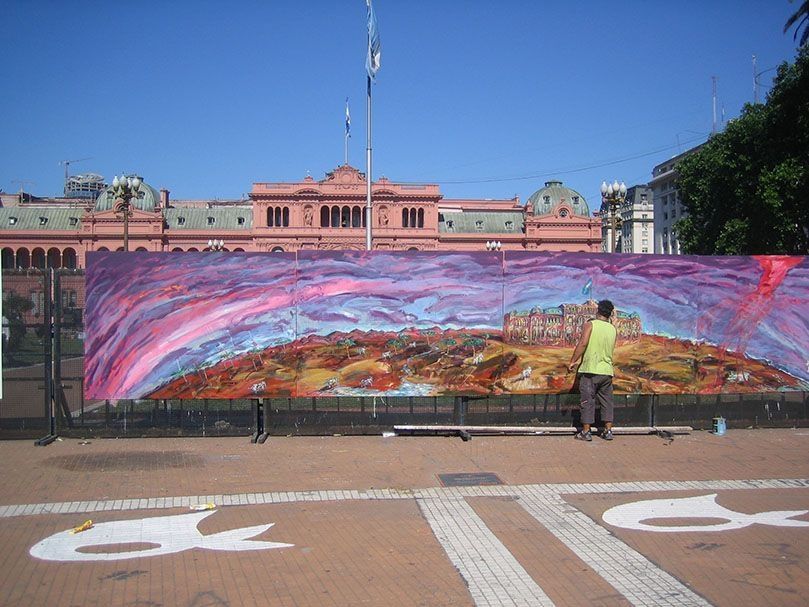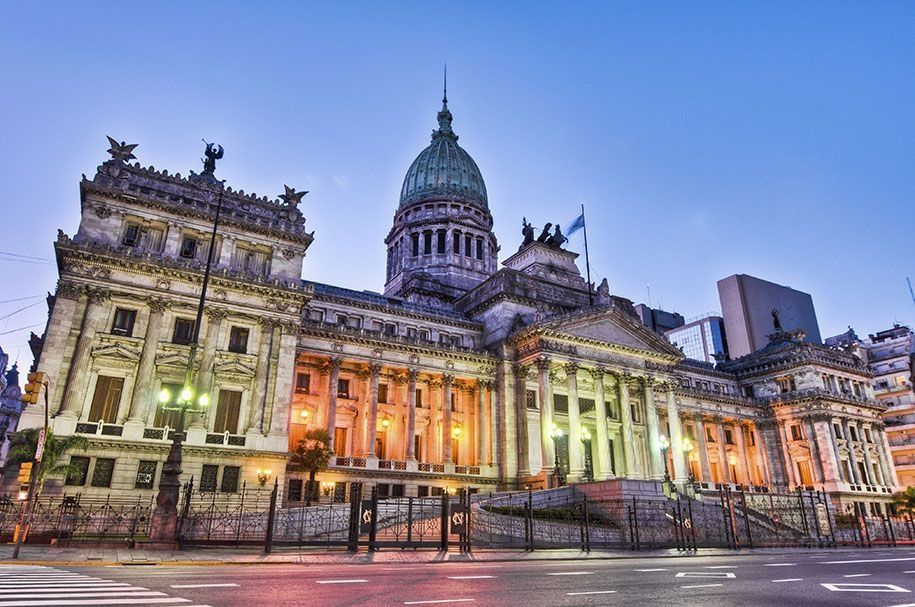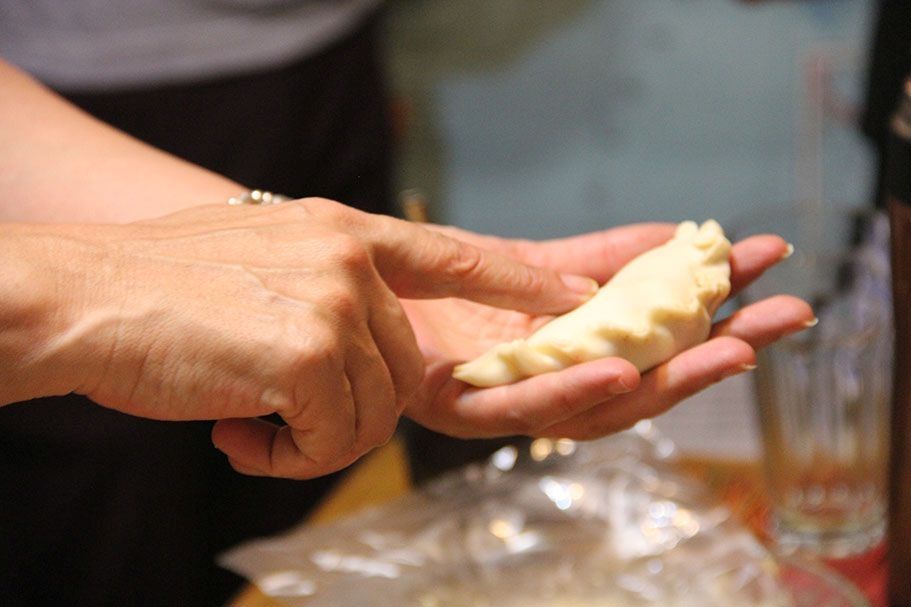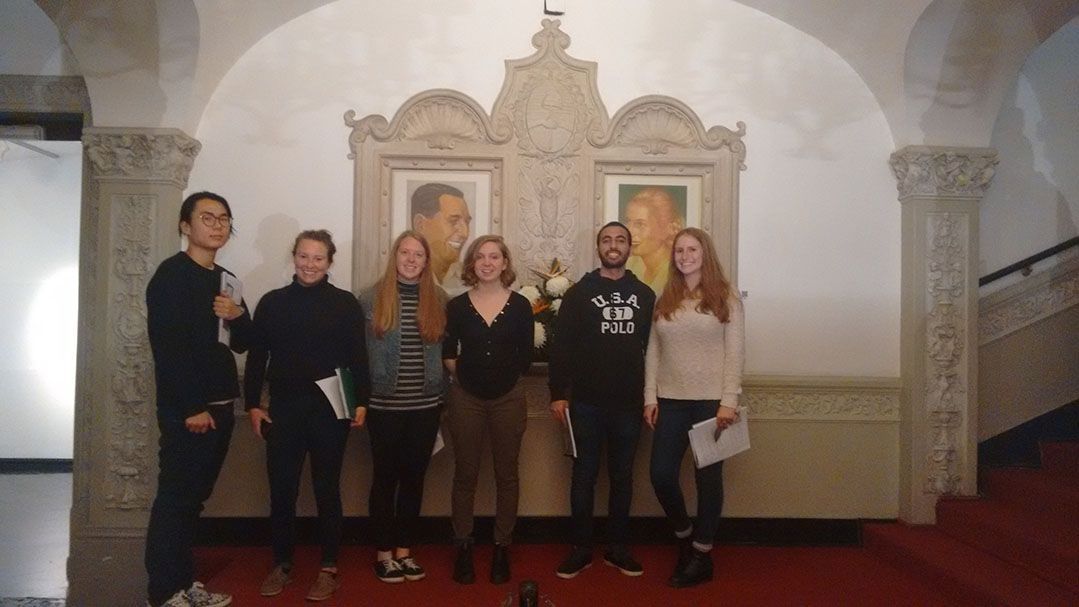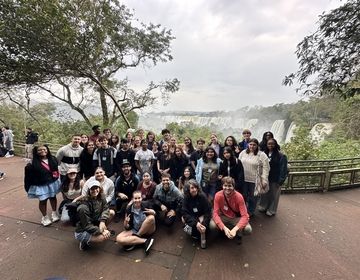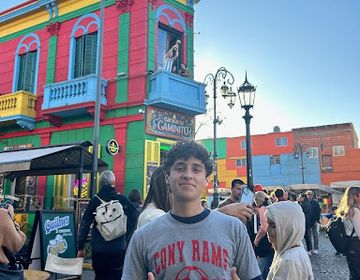Q+A with CIEE: Buenos Aires
This summer, we are excited to announce a new program in Buenos Aires, Argentina – Multimedia Storytelling. Our Portland, Maine staff asked the CIEE: Buenos Aires team a little about the city, the culture (and food!), and their favorite places to check out the art scene.
Can you tell us a little about your city?
Buenos Aires is a huge and diverse city that may sometimes overwhelm students with its chaotic traffic and carefree style. But it always ends up sneaking into students’ hearts because of the magic moments it bares and the warm people it is home to.
Be it making a bike tour along the river, watching a soccer match with mad Argentinians, enjoying a dramatic tango show, or simply drinking a coffee with patisseries at a traditional café, Buenos Aires always has something to offer to the students living here. It is a vibrant city and whether students like being noisy at a party or quiet in nature, in a howling crowd or at an intimate corner with friends, there is always a spot for everyone visiting Buenos Aires to be just them selves.
There are many ways in which the city surprises students. Being served by a collar and tie waitress at a centennial café that was the site for artists and the aristocracy feels like living at the turn of the XIX’s century in the most splendorous time of Argentina. Just by strolling around the city’s capital, one can easily see why it was called the 'Paris of South America.' The stunning buildings and wide avenues that make the city center are some of the things students admire the most. The Teatro Colón opera house, the national Congress, the many bronze monuments and bucolic parks make it a city that most relate to the European capitals.
And still Buenos Aires is a busy and humbling city at a Latin American street level. It is full of street markets, design shops and local restaurants, artisan stalls and outdoor malls. Students love eating empanadas of varied types, choripanes (sausage sandwich) or minutas (dinners done in ten minutes) on the go while walking through the streets on a sunny winter day. The more foodie students try at least once a fancy world-known restaurant: steak, pasta or fusion meals are the principal options. Everything said, pizza here is an institution of its own: every year the mozzarella marathon is celebrated to see what the best classic pizza in town is. Students enjoy the variety and offer, one of the best pizzerias being open 24/7.
There are so many culture events going on in the city, that it is impossible to know them all at once. There are young people playing traditional folk music and aged artists rocking on the radio. Students quickly notice why they say Buenos Aires is the capital of libraries: you’ll find a place where to buy books on every street, be it a rack of used gems or a former three-story stunning ancient theater turned into a bookstore.
Even if at first sight some may think there are not so many natural spots in Buenos Aires, the river and the parks along it are always a way of getting fresh air. The natural reserve park hosts birds and local fauna, fifteen minutes away from the skyscrapers of Puerto Madero. And just an hour from downtown, the delta is a unique place to see people living surrounded by green and water.
What’s your favorite art venue in Buenos Aires? Can you share a special memory with us about that place?
One of my student’s preferred museums, and that happens to be my favorite, is the Evita Museum. Located at a traditional and glamorous villa, that used to host orphans and single mothers when the Evita Perón Foundation worked, the museum is an interactive place to learn from Evita’s life and the policies done under her husband’s administration. One can see at the same place her high fashion gowns while learning on how she promoted the female vote in Argentina. The museum has archive film fragments that create the ambience of the 50s but that still feels contemporary because every room has a particular theme of electronic tango. At the end of the one-hour tour, the best option is to go to the museum’s restaurant in the patio.
I like visiting this museum with my students after discussing Argentina’s modern history. It is a great place for them to review the thoughts they had on Peronism before they arrived to Buenos Aires and contrast them to the views and opinions from Argentineans. Recent history and Peronism is always a controversial subject and if the Evita Museum helps them understand our culture’s stand and questions their previous believes, it is worth the excursion.
Interested in learning more? Check out our Summer Abroad program in Buenos Aires, Argentina: Multimedia Storytelling.
Related Posts
Natural Wonder of the World: A Student Journey to Iguazú
After taking a short plane trip from Buenos Aires to Iguazú, our first stop was exploring the Triple Frontera, where Argentina, Brazil, and Paraguay meet, separated only by the river... keep reading
El Arte del Fútbol
Gracias to our student blogger Luca! From the bustling streets of Buenos Aires to the colorful houses of La Boca, my love for soccer has always been more than just... keep reading
Student blogger: Lali Solis livin’ la vida porteña in Buenos Aires
Hola! I’m Lali Solis! I'm 15 years old from Salinas, California and this summer I have the incredible opportunity to study abroad in Buenos Aires, Argentina. Here's a glimpse into... keep reading
